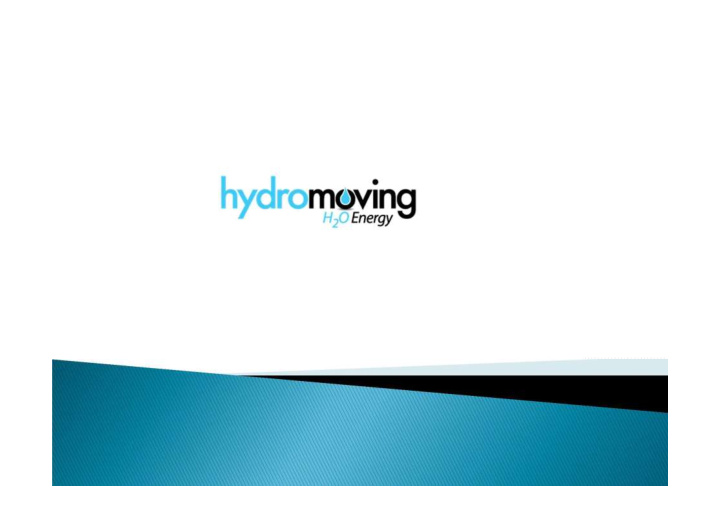



Why HHO... Innovative use of dissociated H2O “Br own ’ s Ga s” allows to separate water molecules in a gas mixture of hydrogen and oxygen that quickly explode at about 530°C and high pressure Gas produced at very low energies, it can be used for multiple applications: powering internal combustion engines, reducing use of fossil fuel to a minimum by integrating it with Oxyhydrogen Drastical reduction of any form of CO, HC, NOx, SOx ...Particulates in the form of PM 2.5, PM 10, … Solution was initially installed and tested on a Nissan 370 Z 3700 cc, made available for experimentation and feasibility study on large ‐ scale “ Hydromoving Systems". Results have been certified from third party Companies (MMarelli, Control Sistem), titled to issue certificates for new vehicles registration: remarkable effects on consumption and emission s… -30% average consumption, -80% pollutants
Nissan 370 Z testing session http://www.youtube .com/watch?featur e=player_embedd ed&v=Tv7G3FX5- Dk HHO std HHO std Test_engine (std) Test_engine HHO
Nissan 370 Z testing results... Key data (*) (*) 35.000 km w/ HHO system activated Urban 10,3 Lt/100 km CO2 = 243,8 g/Km Extra-Urban 6,0 Lt/100 km CO2 = 141,9 g/Km Combined 7,6 Lt/100 km CO2 = 179,5 g/Km Emissions CO = 0,013 g/Km HC = 0,007 g/Km Abstract of vehicle registration certificate
The theory Adding H inside internal combustion engines Applicability: Otto/Diesel engine ultralean combustion Lower temperature ignition Less production of TUH (Total Unburned Hydrocarbons)
Production of H on-board... High electrical power Electrolysis actuated through the use of electric power produced by car alternator Required stocking on board with such technology, high electrical power consumption Std fuel engines cannot be driven with H only: complicate upgrades, corrosion issues, difficult stocking
Production of HHO on-board... Brown ’ s gas Electrolysis actuated using the patent US 3,262,872 by William A. Rhodes (1966) With such electrolysis, the two elements are not separated and are kept together in a mixture called “Br own ’ s Ga s” ( from Yull Brown who received patent U.S. 4,014,777 in 1977 for an electrolyser with cells in series) 2 H2O -> 2H2 + O2 Lower electrical power consumption vs H production Yull Brown patent U.S. 4,014,777
Energetic balance... from electrolysis to Hydromoving HHO production from std electrolysis process... 286kJ/mol required St d E l ectr ol ys i s 60,1kJ/mol are converted into mechanical power... Not suitable HHO production from high efficiency electrolysis... Pulsing electricity (*) Patent n.0001404965 (the alternate current is key) HHO on-demand production+injection... Patent n.0001405327 Hydromoving Required devices: 1) Water tank 2) Electrolysis cells and process ad hoc designed... The «main tank» 3) Electronic injection system (*) electrical impulses... 25-70kHz When water is properly excited, only 48,4kJ/mol are required to obtain the Brown ’ s gas
Next steps... Developments and industralization Design improvement required: 1) Modularity... From prototypes (specific engines) to broader range of vehicles (motorbikes, cars, trucks, bus, ...) and relevant engines 2) Sensitivity analysis... Complete performance spectrum based on mix fuel vs HHO 3) Omologation... By Country 4) Optimization... Dimensions, costs (actual estimate: 4.000-8. 000€ /car engine) Targets (industrialized device): 90% pollutant reduction keeping same vehicle certified performances... Requires engines upgrades Elimination of dangerous emissions Reduced dimensions and weights, no impact on actual vehicles capacity and load (car trunks, people, ...) Cost impact within 1% of vehicle value Adoption on the entire automotive market
Thank you! info@hydromoving.com
Recommend
More recommend